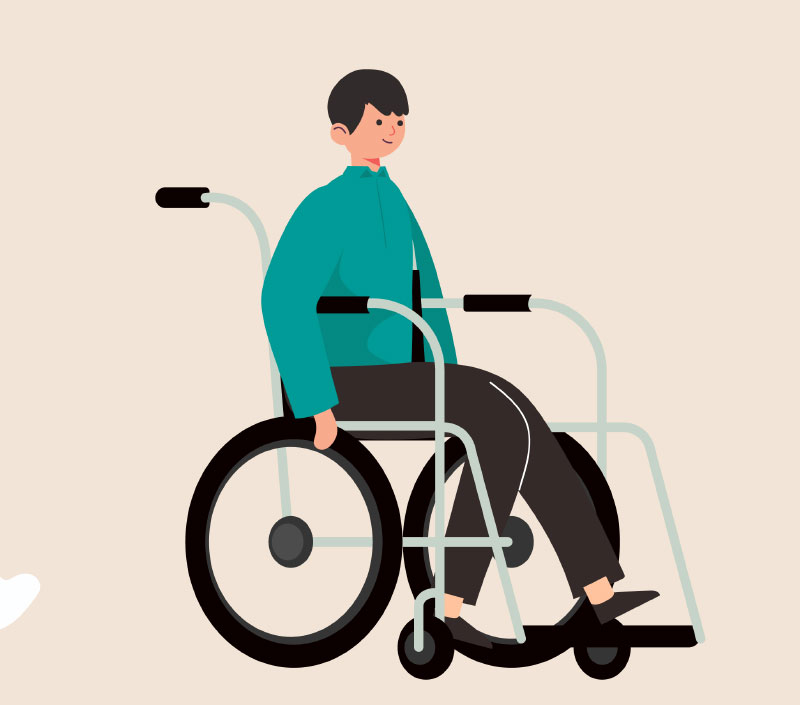Paralysis
Paralysis
A lack of muscular function in a part of your body is referred to as paralysis. It might be localized or generalized, partial or full, and temporary or permanent. At any stage in your life, paralysis may affect any portion of your body.
What are the signs and symptoms of paralysis?
If you have paralysis, you are unable to move the afflicted areas of your body in any way. Depending on the site of the damage, paralysis may be accompanied by a lack of feeling. Sudden paralysis is caused by strokes and spinal cord injury.
Some medical problems might result in gradual paralysis. You may experience:
- Consistent loss of sensation and muscular control.
- Muscle cramps.
- Limb tingling or numbness
What are the types of paralysis?
- Complete paralysis: When you have complete paralysis, you can’t move or control your paralysed muscles at all. You could also be unable to feel anything in those muscles.
- Partial or incomplete paralysis: When you have partial or incomplete paralysis, you may still feel and perhaps control your paralysed muscles.
- Localized paralysis affects just one region, such as your face, hands, feet, or vocal chords.
- Generalized paralysis affects a larger portion of your body and is classified based on how much of your body is affected. The kind is generally determined by the location of the injury to your brain or spinal cord.
- A monoplegia is a kind of widespread paralysis that only affects one limb.
- Diplegia affects the same region on both sides of the body, such as both arms, legs, or both sides of the face.
- Hemiplegia is a condition that affects just one side of your body and is generally caused by a stroke that destroys one side of your brain.
- Quadriplegia (or tetraplegia) is the paralysis of all four limbs, occasionally coupled with specific organs.
- Paraplegia Paralysis from the waist down is referred to as paraplegia.
- Locked-in syndrome is the most unusual and severe kind of paralysis, in which a person loses control of all muscles save those that regulate their eye movements.
How is paralysis diagnosed?
Neurologists will evaluate you and inquire about any injuries you may have. You will discuss when you first became aware of the condition in the case of progressive paralysis. Your doctor may prescribe one or more of the following tests:
- X-rays reveal damaged bones that might cause nerve damage.
- Imaging tests, such as a CT scan or an MRI, are used to look for evidence of a stroke, brain damage, or spinal cord injury. A full-body imaging scan reveals the bones, muscles, and tissues.
- A myelogram examines the spinal cord and nerves for damage.
- An electromyogram (EMG) is a test that measures the electrical activity of nerves and muscles.
- A spinal tap (lumbar puncture) is a procedure that examines spinal fluid for infection, inflammation, and diseases such as multiple sclerosis (MS).
Treatment for Paralysis
In most cases, paralysis cannot be treated. Instead, therapy aims to target symptoms and lessen the effect of paralysis on your life. Among the therapy possibilities are:- Surgery to remove physical barriers to movement.
- Medications for infection prevention, swelling reduction, and symptom management are given to control or treat persistent pain.
- Ongoing monitoring to ensure that your condition does not worsen.
- Wheelchairs, artificial respirators, and catheters are examples of medical equipment used to increase function.
- Psychotherapy and support groups may help you manage your disease.
- >Ongoing physical, exercise, and occupational treatment can help you restore some functionality; the more experience you receive, the more probable it is that you will be able to work around your injuries. Furthermore, physical therapy may help rewire your brain and may possibly cure certain paralysis symptoms.
For more information & consultation on Paralysis Treatment, Call our expert Dr. Amit Shah – Consultant Neurologist in Mumbai on 9819561456 or Book an Appointment

